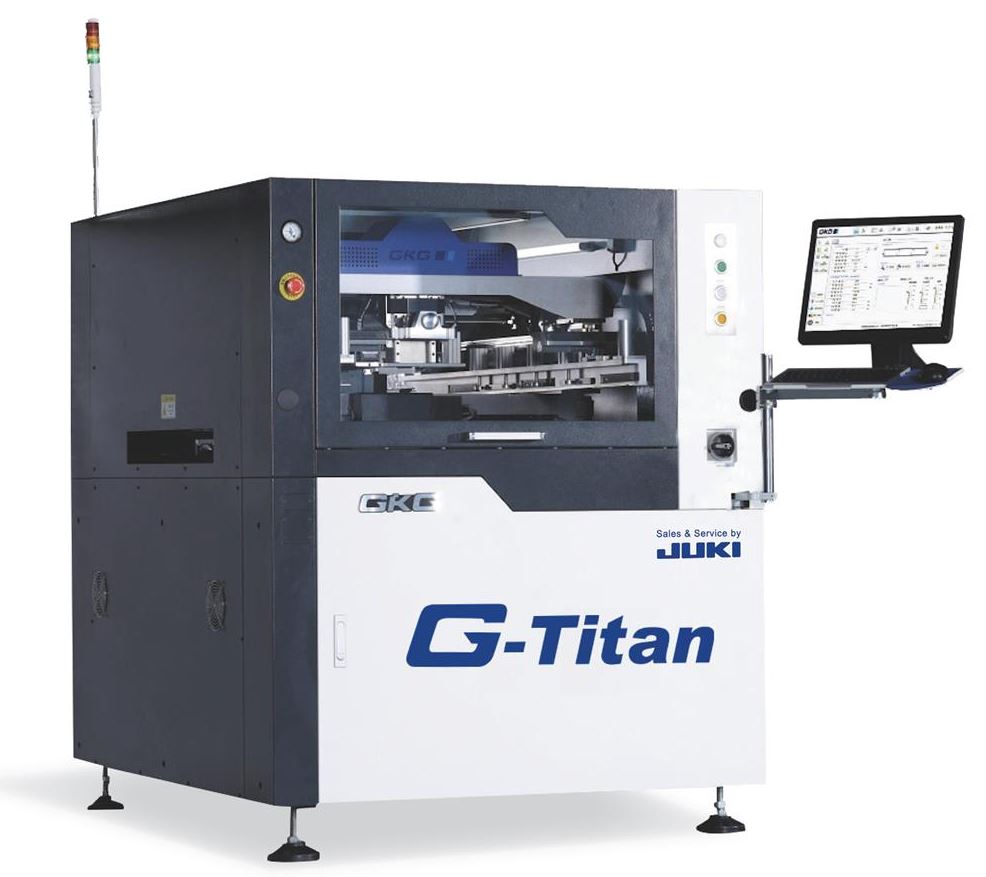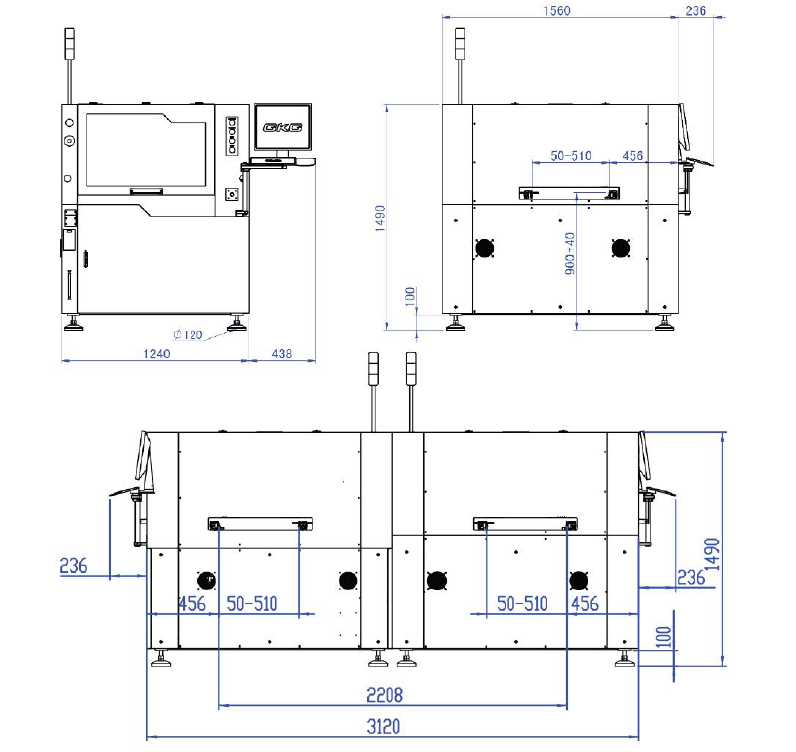Fully Automatic In-Line Screen Printer | JUKI G-TITAN
- Category: SMT Stencil Printers
- Manufacturer: juki

The G-Titan screen printer from GKG offers Opti-Paste Control (OPC), get ready for lights-out manufacturing!
- Quality Print Control (QPC)
- Solder Paste Rolling Measurement
- Stencil Lock
- Automatic Solder Paste Dispense
About the Fully Automatic In-Line Screen Printer | JUKI G-TITAN
- Board Size: Max. 510mm (L) x 510mm (W) | Min. 50mm (L) x 50mm (W)
- Board Thickness: 0.4~6mm
- PCB Thickness Adjustment: Automatic
- Board Weight: Max 5Kg
JUKI's new G-TITAN is equipped with premium quality functions empowering the JUKI Screen-Printing Solution on its path to Industry 4.0 and “Lights-Out-Manufacturing”. Ease of use is provided due to a brand new GUI – Graphical User Interface – which is operated via touch screen. G-TITAN supports circuit boards of sizes up to 510 × 510 mm and therefore addresses its demands towards the mid-size segment. Innovative novelties such as the Opti Paste Control – OPC – as well as the Quality Print Control – QPC – represent useful individual functions to achieve optimised paste consumption, higher level of automisation and avoidance of printing errors during the screen-printing process.
Opti-Paste Control (OPC) - Get Ready For Light-Out Manufacturing
Auto Paste Dispensing - The paste is automatically dispensed across the entire squeegee length, maintaining at 15mm rolling diameter, adopting the common 500 grams' solder paste jar. Completely eliminates the wastage of solder paste overflowing to the sides of squeegee.
Paste Rolling Diameter Monitoring System - Tracing solder paste rolling diameter in real time and trigger the auto dispensing if it falls below 10mm. Completely eliminate insufficient solder paste on stencil and keep the paste rolling speed within optimum range to achieve best printing result.
OPC Squeegee - Retainers at both sides can be adjusted to the exact length of the PCB, enabling solder paste to be retained within the PCB length to obtain a clean sweep. Possess absolute control over desired printing area, to achieve best printing quality.
Quality Print Control (QPC) - Nothing Is More Important Than a Good Print
Stencil Aperture Inspection System - Using panel light installed at the top and CCD camera below to inspect stencil apertures. It automatically detects the clogging of stencil apertures to eliminate poor quality stencil being used, ensure quality printing right from the start.
The Stencil Flattener & PCB Clamper - The Stencil Flattener sucks the stencil firmly on both sides of the conveyor during printing cycle. To eliminate stencil vibration by having firm contact with PCB. The PCB clamper is a combination of retractable top clamp and motor controlled side clamp, uniquely designed by GKG (patented). With these standard features, all of today's available and challenging substrates can be securely clamped and print to the highest quality.
G-TITAN Screen Printer Options
Ready for Industry 4.0 - Through machine status, parameters can be uploaded automatically. Designed to support customers' advancement towards Industry 4.0 intelligence production, G-Titan provides seamless connection with users' MES system, enhancing product traceability and maintenance needs.
SPI Close-loop Connection - With SPI close-loop system, machine will automatically adjust and correct the print deposits based on the feedback given with regards to poor printing quality. This will facilitate improved print quality and production efficiency, by forming a complete printing feedback system.
Back to Back (BTB) - 2 Machines back to back is a perfect match to all dual lane SMT lines. The machines can be operated independently of each other, running different types of product.
Positive Dispenser Pump (PDP) - Integrates two technologies into one platform. The new PDP option accurately dispenses an additional medium of material (Paste or Glue) in dot, line and area patterns after the printing process. Ideal for cusla 1 iers with mixed technology boards as this option maximizes production flexibility, minimizes floorspace and reduces capital expenditures.


